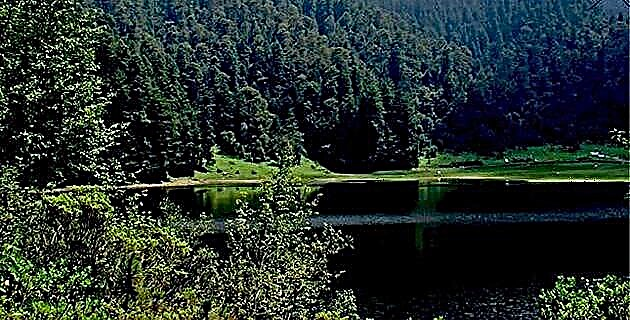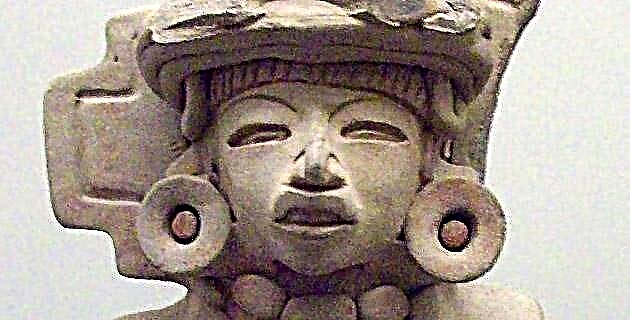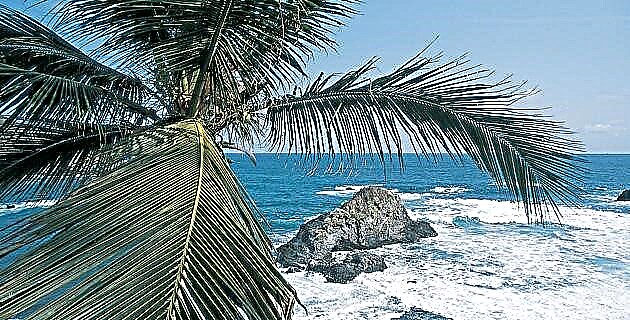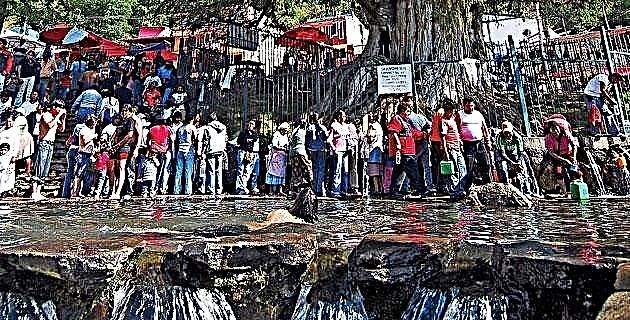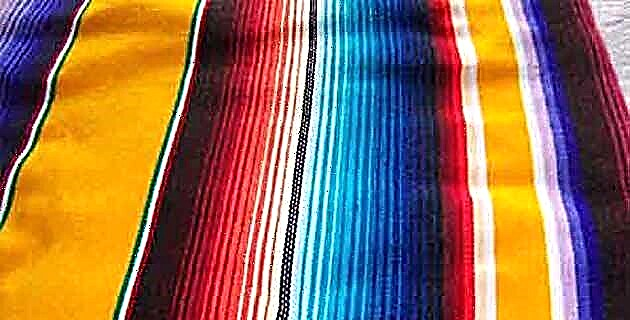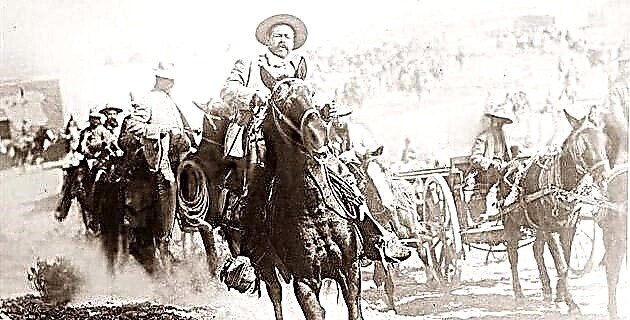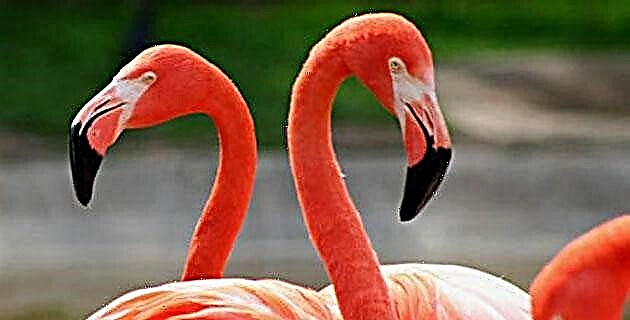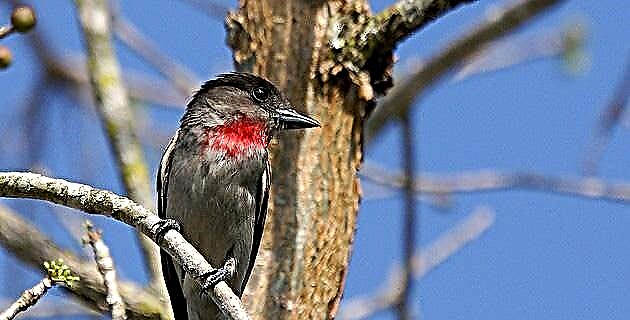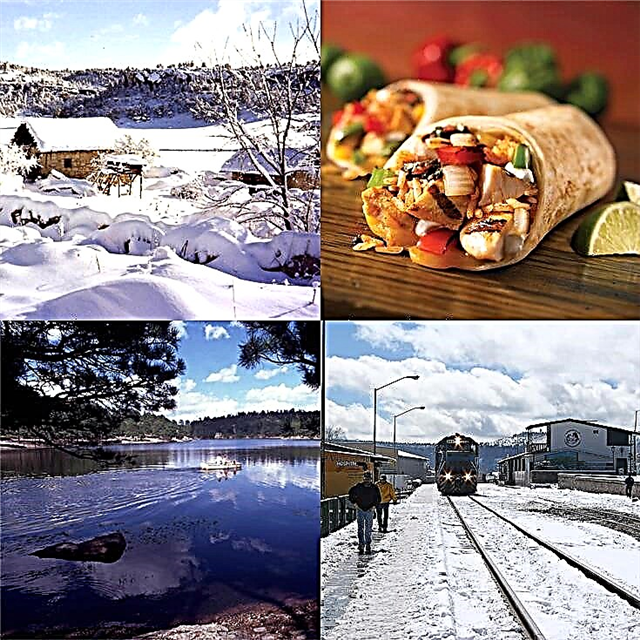Surrounded by infinite abysses, spectacular waterfalls and ancient indigenous culture, Creel awaits you to offer you a vacation that you will remember for a lifetime. Don't miss out on anything that the Magical Town of Chihuahua has to offer with this complete guide.
1. Where is Creel?
Creel, nestled in the Sierra Madre Occidental, is the entrance to the Copper Canyon and the main settlement on the way to the most spectacular canyons and abysses of Chihuahua. This town of the Bocoyna municipality in the southwest of the state of Chihuahua, was elevated in 2007 to the rank of Mexican Magic Town to promote the tourist use of its incomparable natural spaces and its rich Tarahumara culture.
2. How is the climate of Creel?
Due to the latitude and differences in altitude between the sites that are located in the hollows and those that are located in the heights, the temperature differences in this area of the Sierra Madre Occidental are usually significant. In the town of Creel, the average temperature in the hot months of summer is in the order of 16 ° C, but can exceed 27 ° C at midday. In winter it's cold; with average temperatures of -5 ° C and icy peaks down to -18 ° C.
3. How was Creel formed?
The territory of Creel, like many others in the Chihuahuan ravines, has been inhabited since time immemorial by the Rrámuri people. The current mestizo town of Creel was founded in 1907 as a railway station in the place where a Rrámuri ranch was located. Creel was for a long time the end point in Mexico of the old railroad that started from Kansas City and it has conserved its old name of Creel Station. It was named in honor of the politician and businessman Enrique Creel Cuilty, a Chihuahuan figure from the Porfiriato era.
4. How do I get to Creel?
The road trip from the city of Chihuahua to Creel is about 260 km and takes about 3 and a half hours, heading west towards the city of Cuauhtémoc and then towards the town of La Junta, which is 110 km from the Magic Town . From Ciudad Juárez, the most populated city in Chihuahua, the journey is about 600 km south through Chihuahua 27. Mexico City is more than 1,700 km from Creel, a long stretch of about 20 hours by land, so it is best to combine plane with car.
5. What are the main attractions of Creel?
Creel is a peaceful town of just over 5,000 inhabitants. The core of the town is its Plaza de Armas, around which its main religious buildings and houses are located, including those dedicated to exalting the beautiful and ancestral features of the culture of the indigenous Rarámuris. The growing trend of adventure tourism has welcomed Creel as one of its favorite destinations due to its magnificent places to practice extreme sports. Creel also has spaces for quiet relaxation, such as its beautiful nearby missions, waterfalls and hot springs.
6. What is there to see in town?
A walk through Creel must begin with the Plaza de Armas, shaded by leafy trees, with a simple kiosk and presided over by the statue of the man who gave the town his surname, Enrique Creel. In one of the corners of the square is the Iglesia de Cristo Rey, an austere neo-Gothic temple built in the 20th century. In another corner of the square is the Temple of Our Lady of Lourdes, another simple and beautiful church from the 20th century.
7. Is there a place to learn about the Tarahumara culture?
The people of the Tarahumara or Rrámuris continue to inhabit Chihuahua since their ancestors arrived in America through the Bering Strait. The "light-footed" Indians were already in the Sierra Tarahumara 15,000 years ago. At the Museo Casa de Artesanías de Creel it is possible to immerse yourself in the history and way of life of one of the most remote ethnic groups of the Mexican melting pot through its everyday objects, which they continue to use and sell as handicrafts.
8. How is the craftsmanship of the Rrámuris?
The indigenous Tarahumara have always been consummate craftsmen in weaving insoles, which they turn into beautiful basketry objects, such as open garments with covers. Rarámuri artisans also make pottery products, woolen textiles, and wood carvings. They also make musical instruments, such as the kampore, a wooden and deerskin Tarahumara drum, and the chapereque, an ancient 3-stringed instrument. These handicrafts are exhibited and sold in the Museo Casa de Artesanías de Creel and in other establishments.
9. Is there a viewpoint near Creel?
Cristo Rey, the patron saint of Creel, has a monument on a hill in the town. This spiritual sentinel of the Pueblo Mágico is an 8-meter figure of Jesus with open arms and almost all tourists make the brief pilgrimage there to take a picture and be photographed. The place is also a viewpoint with magnificent views of Creel and its surroundings.
10. Where do I practice adventure sports?
About 50 km from Creel is El Divisadero, a place where the Barrancas de Tararecua, Urique and del Cobre converge. It is a site with breathtaking views, which also offers the possibility of practicing a great variety of entertainment and extreme sports in the Barrancas del Cobre Adventure Park. There is the longest zip-line route in the country, routes for mountain biking and for horseback riding, motorcycles and ATVs, natural walls for climbing and descending, and a cable car.
11. What is the cable car like?
Also in the Barrancas del Cobre Adventure Park it is possible to admire the abysmal landscape from the comfort of an air-conditioned cable car. It was put into service in 2010 and runs almost 3 km from the El Divisadero area, at a height of 400 meters. The section is among the longest in the world without intermediate support towers, so the excitement is full.
12. Are there other places to climb?
With so many ravines and abysses, the Creel area is a paradise for enthusiasts of some extreme sports, such as climbing. A place near Creel highly praised by athletes who are also fans of natural beauty, is the Barranca Candameña. At 1750 meters it is not the deepest, but apart from its rocky walls, such as the Peña del Gigante, which is almost 900 meters high, it offers wonderful views of the Basaseachi and Piedra Volada waterfalls, and the vast panorama.
13. Are there other nearby attractions?
Near Creel is the mission of San Ignacio de Arareko, waterfalls, hot springs, lakes and impressive valleys. The mission of San Antonio was built by the Jesuits in the 18th century in Romanesque style and in sober pink stonework. It presents the typical austere construction of this type of building in northern Mexico and the temple currently in service was erected at the beginning of the 20th century. Near the mission there is a cemetery with tombs from the 17th century onwards.
14. What is the Basaseachi Waterfall like?
Near Creel is this waterfall that is the fifth largest in the American continent, with a length of 246 meters in its fall. The "place of coyotes" in the Rarámuri language shows its greatest splendor during the rainy season, which runs from July to September, when the flow is maximum and the vegetation turns green, producing a beautiful contrast of colors. You can go down to the bottom or admire it from an intermediate viewpoint called La Ventana.
15. Are there other waterfalls?
It is a pity that the Piedra Volada Waterfall dries up in the dry season, because otherwise it would be the longest permanent waterfall in Mexico, with its impressive 453 meters of fall. If you are going to camp nearby, take a good coat, because the place is cold. The Cusárare Waterfall, about 25 km from Creel, is one of the most beautiful in the Sierra Tarahumara, with its 30 meter drop and its stream lined with pine trees. It is frequented by visitors who go camping and practicing outdoor entertainments, such as mountain biking and hiking.
16. What about the Chihuahua to the Pacific Railroad?
The railway that runs almost 700 km between Chihuahua and Los Mochis, crossing the Copper Canyon, popularly called El Chepe, has become a legendary space in the modern history of northern Mexico, mainly due to the rugged geography and the abysses of the Sierra Tarahumara. One of its busiest stations along the way is in Creel and even if you don't need the railway because you will do it all by car, you should take a ride on the train so that you at least cross some of the almost 40 bridges, enjoying the strange pleasure of vertigo.
17. Where are the hot springs?
The Sierra Tarahumara is also a territory of hot springs. About 20 km from Creel, in the municipality of Urique, is Recowata, an area with hot springs. The waters have been dammed in enclosures built in harmony with the environment and its temperature for most of the year is 35 ° C, which feels splendid especially in the cold season. It is reached by a path that descends to the Barranca de Tararecua, in a route that is in pleasant contact with the landscape.
18. How far is Batopilas?
Creel is an almost obligatory step towards the Copper Canyon and many people use the town to settle and from there get to know all that part of the fascinating Chihuahuan territory. 137 km from Creel, in the Copper Canyon, is also the Magic Town of Batopilas, with its legendary mining past, the beautiful architecture erected during the golden age of silver exploitation, its vertigo abysses and its vast and beautiful spaces to spend unforgettable days in intimate contact with primitive nature.
19. What is there to see in the Valley of the Monks?
Near San Ignacio de Arareko there is a valley with impressive rock formations that date back more than 20 million years. The erosion of the water and the wind sculpted the stones in an elongated and pointed shape, turning them into monoliths that look like monks participating in a spectral religious service in the open air, with the tourists who come there as the only faithful.
20. What is the interest of Lake Arareko?
This lake of the ejido of San Ignacio de Arareko, 5 km from Creel, is a beautiful body of water surrounded by forests of conifers, oaks and strawberry trees, ideal for camping and for practicing outdoor entertainments such as walks, hiking, observation of nature and mountain biking. It has picturesque cabins with basic services, managed by a Tarahumara community. If you like the cold, the place can freeze to -20 ° C in the middle of winter in the northern hemisphere, with snow storms. In summer the thermometer rises up to 26 ° C.
21. How is the gastronomy of Creel?
In Creel the typical Chihuahuan food is consumed, such as the machacas prepared with dried meat and the popular burritos. The roasts of cuts of meat are frequent dishes both in restaurants and in homes and gatherings of friends. Likewise, the pasty chiles and the fried eggs, which are commonly eaten with a green jalapeño and tomatillo sauce.
22. Where do I stay in Creel?
Creel has a hotel offer according to the profile of the adventure tourist who is the main client. Casa Margarita’s is a comfortable and small hotel, located on Avenida López Mateos 11. Hotel Posada del Cobre, located on Avenida Gran Vision 644, is a clean, cozy accommodation with a homemade breakfast prepared at the moment. The Quinta Misión Hotel is located on López Mateos Avenue and has spacious and well-air-conditioned rooms. Other recommended accommodations in Creel are Best Western The Lodge at Creel, Posada Barrancas Mirador and Hotel Villa Mexicana at Creel.
23. Where am I going to eat?
Apart from the hotel restaurants, Creel has some stoves to taste the delicious Chihuahuan cuisine. La Troje de Adobe is a place where customers highlight its rich dishes, but especially coffee, chocolate and desserts. La Cabaña Restaurant offers regional food, as well as Tío Molcas and Restaurant Bar La Estufa. La Terraza is frequented for its burritos and hamburgers, while the menu at the Lupita Restaurant stands out for its steak rarámuri.
Ready to immerse yourself in the Tarahumara culture and to launch yourself through the most exciting zip lines in Mexico? We hope you enjoy Creel to the full!


